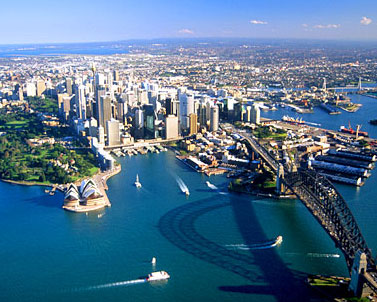 The Australian economy got off to a strong start in 2015. The latest economic figures show that GDP was stronger than expected in the first quarter of the year, rising by 0.9%, up from 0.5% in the fourth quarter of 2014. And the economy is forecast to grow at 2.6% in 2015 before picking up to 2.8% in 2016 and then returning to trend growth at 3.1% in 2017. Cushman & Wakefield reveals the current state of play in each of the country’s four key office markets.
The Australian economy got off to a strong start in 2015. The latest economic figures show that GDP was stronger than expected in the first quarter of the year, rising by 0.9%, up from 0.5% in the fourth quarter of 2014. And the economy is forecast to grow at 2.6% in 2015 before picking up to 2.8% in 2016 and then returning to trend growth at 3.1% in 2017. Cushman & Wakefield reveals the current state of play in each of the country’s four key office markets.
Sydney
Overview
The second quarter of 2015 has seen solid increases in the number of enquiries from both large and medium-sized tenants. A number of major deals, including one with Apple, have been signed as vacancy rates fall across the Sydney metropolitan markets. Notably, the western corridor has become the tightest office market in the central business district as the precinct shapes itself into a new financial hub. The vacancy rate in the western corridor fell to 5.6% in January 2015 from 6.3% in the previous quarter. Gross rents for grade-A office space in the second quarter of 2015 averaged A$750 to A$1,100 (£350-£513) per sq m per year.
What next?
Net absorption in the CBD is expected to be positive for the remainder of 2015. As a number of major deals are finalised in the second half of the year, we expect vacancies to fall further. However, the vacancy rate could rise again when the migration to Barangaroo – the 54-acre, A$6bn mixed-use development on the western edge of Sydney Harbour – commences early next year.
Perth
Overview
Leasing conditions in the Perth commercial market remain stagnant, amid weakening demand. As resources-related companies reduce their staff and functions, demand for office space has plummeted over the past 12 months. Occupiers are gaining an upper hand over landlords, as effective rents continue to slide and vacancies reach a 20-year high. In the second quarter of 2015, net face rents for grade-A office space ranged from A$550 to A$700 and incentives were being offered at around 20% to 35%.
What next?
Further contraction. Over the next 12 months, we expect leasing conditions to favour tenants – around 130,000 sq m will come on stream over the period. Despite the fact that around 60% of this space has been pre-committed, we believe the backfill space created as tenants migrate to the new developments will put further pressure on rents, particularly under the weak demand conditions.
Melbourne
Overview
A tale of two markets. While office demand is rising in the eastern core, pockets of high vacancy remain in the city’s western precinct. Strong demand in the east – home to investment banks and high-end consulting firms – drove vacancy rates from 8.7% to 7.2% in January 2015. As of June 2015, availability of grade-A office space in the eastern end remained tight, but the western core saw vacancy rising to 11% in January 2015, up from 9.5% in the previous period. Melbourne remains a relatively cost-effective option for tenants, with most mid-rise grade-A space available at around A$400-A$500 per sq m net. Exceptional terms are on offer for some of the new developments, with incentives of up to 35%.
What next?
The leasing market is expected to remain tenant-favourable in the short term. We believe tenants will maintain an upper hand over landlords for the remainder of the year, particularly in submarkets with relatively high vacancy rates, such as the western core and docklands. Rental growth this year is expected to remain patchy until cyclical vacancies are reduced.
Brisbane
Overview
The first half of 2015 saw high vacancy and attractive incentives enticing larger occupiers to pre-commit to developments in order to secure better-quality accommodation. Legal and financial firms were among the most active occupiers looking to secure future lease commitments at current leasing levels. As of June 2015, face rents for grade-A office space hovered around A$580-A$700 per sq m a year and incentives ranged from 32% to 40%.
What next?
With vacancy rates showing few signs of improvement and office demand still lagging, we expect Brisbane’s CBD market to remain in tenants’ favour in the second half of 2015. While the market remains stagnant, we maintain a cautiously optimistic outlook for the commercial market as white-collar employment growth in Queensland is tipped to return in the coming years. The state is also looking to diversify away from resources and into the services sector, which will have a positive impact on office demand.










